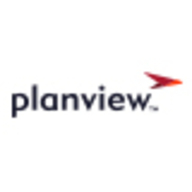

Microsoft Azure DevOps and Planview AgilePlace are leading contenders in project management solutions for software development and agile management. Microsoft Azure DevOps is favored for integration with Microsoft services, whereas Planview AgilePlace excels in customizable agile methodologies.
Features: Microsoft Azure DevOps offers CI/CD automation, source control management, and third-party integration. Planview AgilePlace focuses on Kanban customization, work-in-progress limits, and workflow visualization.
Room for Improvement: Microsoft Azure DevOps could enhance its user interface experience, streamline agile board customization, and expand feature documentation. Planview AgilePlace may benefit from improved integration capabilities, scalability options for larger teams, and enhanced support resources for beginners.
Ease of Deployment and Customer Service: Microsoft Azure DevOps provides seamless deployment for Microsoft Azure users and extensive support resources. Planview AgilePlace offers cloud-based deployment emphasizing agile coaching and strategic guidance, ideal for businesses focusing on agile transformation.
Pricing and ROI: Microsoft Azure DevOps presents flexible licensing with competitive pricing, appealing to small and medium businesses within the Microsoft ecosystem. Planview AgilePlace, with higher upfront costs, offers long-term value through improvements in agile maturity, potentially yielding higher ROI for organizations committed to agile excellence.
On a scale of one to ten, where ten is the best, I would say ROI is an eight.
Resolving issues took time since understanding our unique problems was not always straightforward for support teams.
The scalability has left me pleased, not just for our teams in Europe, the Middle East, and Asia, but as we expanded into North America, Africa, and even Australia.
The solution is stable, and we did not encounter any stability issues.
Those processes are a bit difficult for some customers who may not have technical knowledge and don't go through the entire documentation.
Enhanced system guidance highlighting best practices would be beneficial, especially if experienced personnel are not available for support.
They don't even provide a POC where you can have a sandbox or stuff that you can go through and see how exactly it's costing.
I find it to be expensive.
Our company organized a training session with a certified Azure expert, which was extremely beneficial for adopting best practices during the initial three months.
I can't approve my own request and move the code around without a review.

Microsoft Azure DevOps is a cloud service that enables developers to collaborate on code development projects and create and deploy applications quicker than ever before. The service helps unite developers, project managers, and software development experts through a collaborative experience while using the application. For the users' convenience, Azure DevOps offers the user cloud services through Azure DevOps Services or an on-premises service using Azure DevOps Server. In addition, it supports integration with additional services and adding extensions, including the ability for the user to create their own custom extensions.
Azure DevOps provides a variety of unified features that can be accessed through their web browser or IDE client, such as:
Benefits of Microsoft Azure DevOps
Microsoft Azure DevOps offers many benefits, including:
Reviews from Real Users
Microsoft Azure DevOps stands out among its competitors for a variety of reasons. Two major ones are its ability to forecast how long each task will take and the ability for users to follow the entire development process.
PeerSpot viewers note the effectiveness of this solution. An executive chief operating officer for a cloud provider notes, “We can forecast tasks and the number of hours a task will take and can compare it with how long a task actually takes.”
Carlos H., a product and system director at SPCM, writes, “I think the most usable thing is that you can follow the whole progress of the development process. This makes it very useful for us.”
Planview AgilePlace is a cloud-based solution designed to provide businesses with a continuous flow of work to help teams accelerate delivery times by visualizing their work with enterprise Kanban boards and lean metrics. Planview offers project managers the visibility, resource management, and real-time analytics necessary to help their teams reduce bottlenecks and dependencies and work more effectively. By using Kanban boards, teams are able to visually track and manage the flow of their work from the strategy level, through implementation up to end-product delivery.
Planview AgilePlace Benefits
Planview helps teams to smoothly implement their strategies by offering its users the following benefits:
Reviews from Real Users
Planview AgilePlace stands out among its competitors for a number of reasons. Several major ones are its user-friendly management pane, the visibility that it provides for its users, and its agile management capabilities.
A manufacturing manager at a large manufacturing company writes, “Using the tool seems to save time versus trying to do things in a regular manner. It is highly collaborative; everybody can see things in one place. It is a highly functional, but pretty simple tool. That is hard to find: A tool that has a lot of functions, but is also simple.”
We monitor all Application Lifecycle Management (ALM) Suites reviews to prevent fraudulent reviews and keep review quality high. We do not post reviews by company employees or direct competitors. We validate each review for authenticity via cross-reference with LinkedIn, and personal follow-up with the reviewer when necessary.